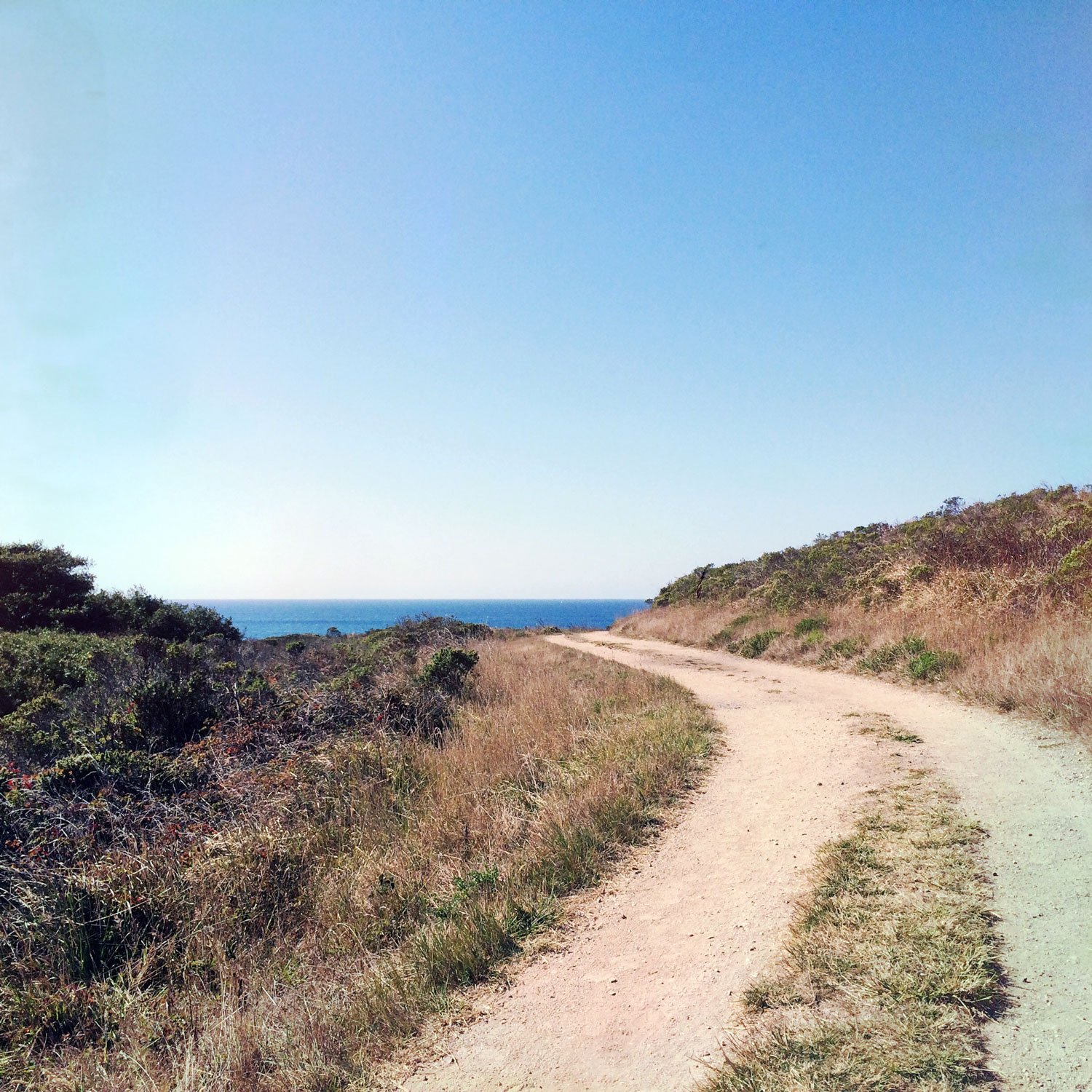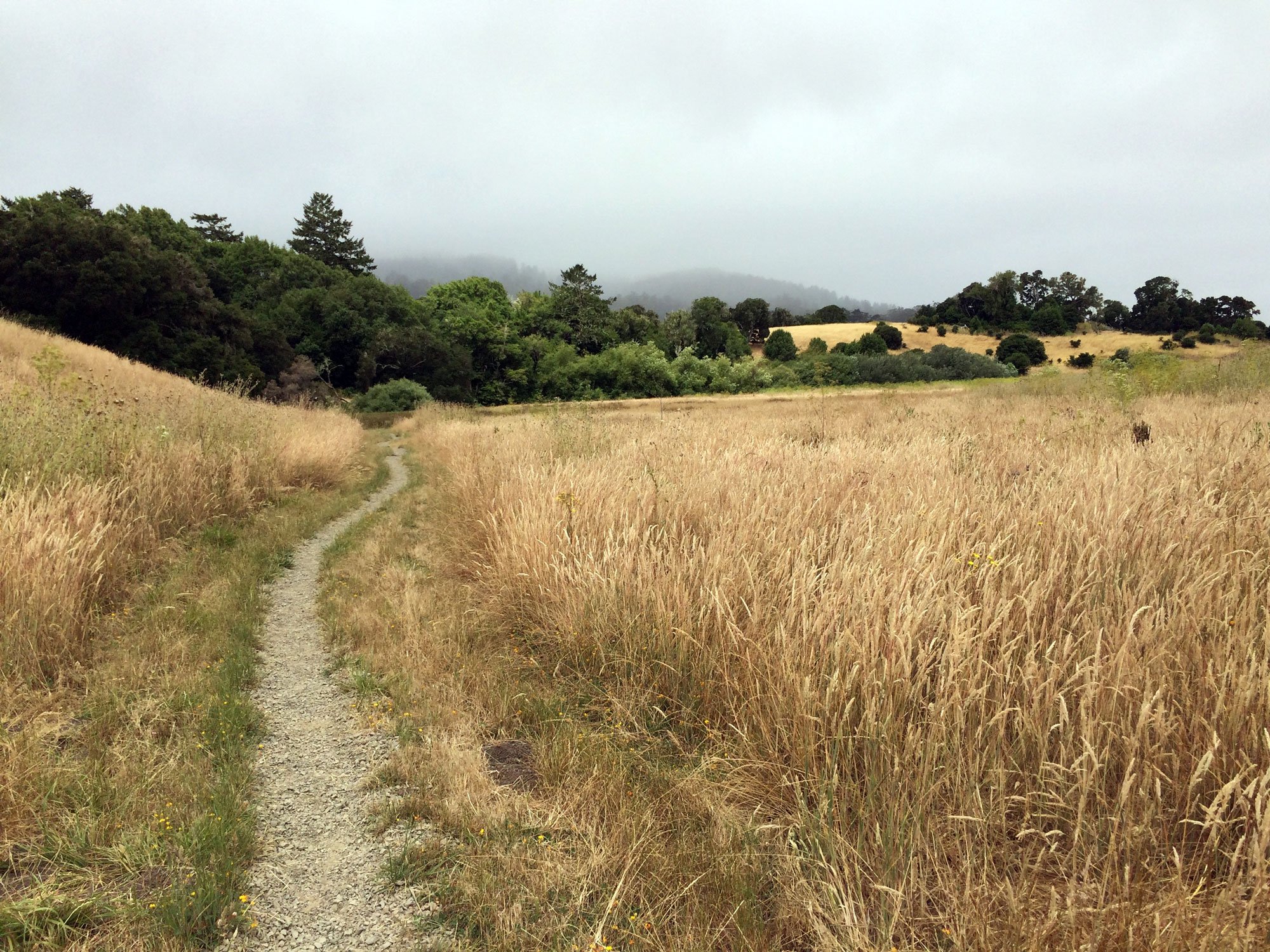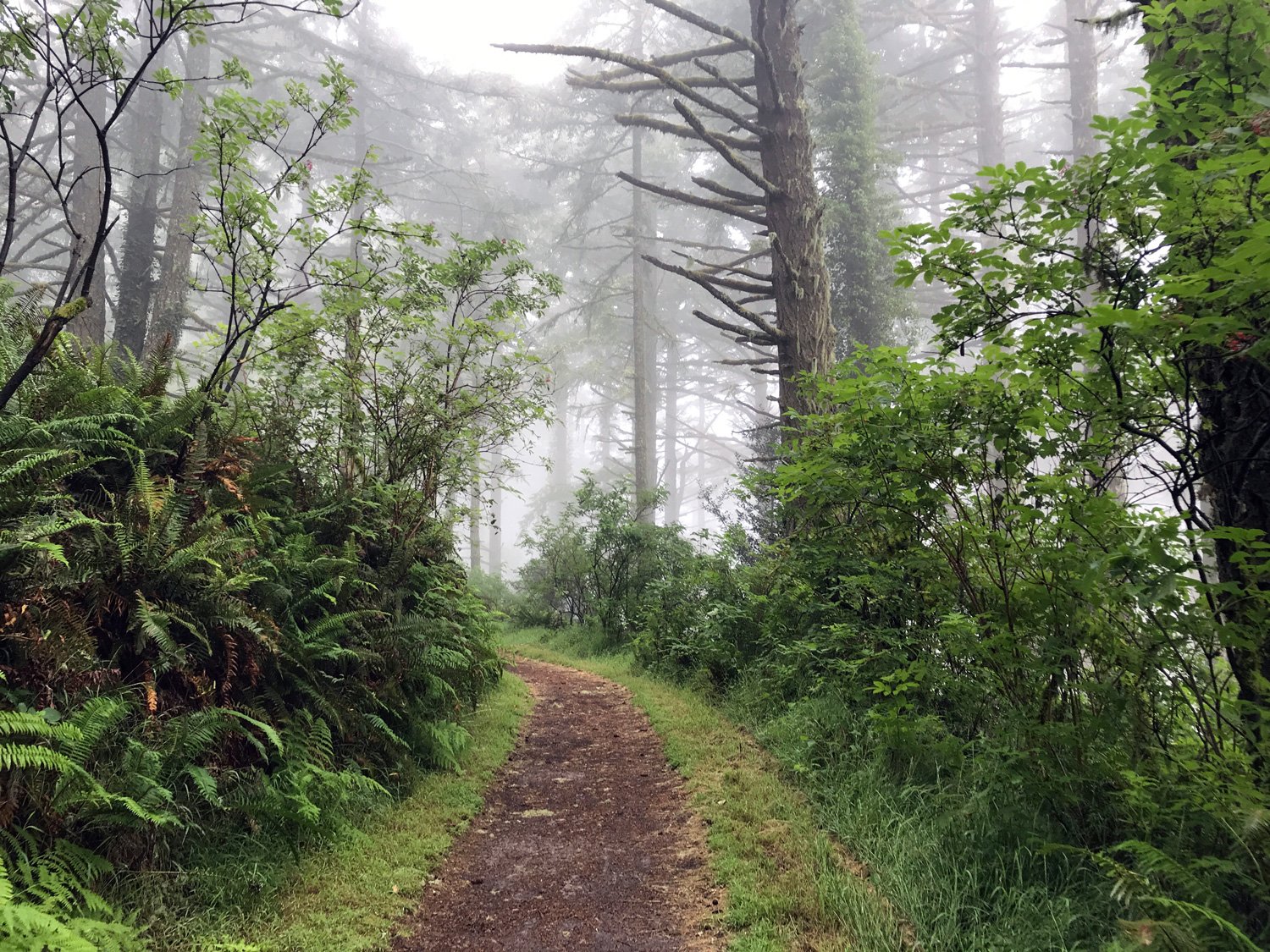The joy of solo hiking
Hiking alone is an opportunity to quiet your mind and open your senses to everything around you. It’s a gift, a privilege, a time to refresh your spirit and feel connected to the earth. I like hiking alone for all these reasons plus it gives me the flexibility to explore at my own pace and to get lost in the moment. I pause frequently to observe the beauty of nature — a spider web glistening with morning dew, a perfect blossom, signs of a well worn animal crossing on a trail, an insect on a shrub, or a bird calling in the forest. Being alone allows me to ponder and ask questions as I encounter interesting things.
Point Reyes National Seashore is a wonderful place to hike solo. The trails are well marked and all you need is the double-side hiking map from the visitor center to navigate. I usually see at least one other person at some point in my journey but there are occasional days when I don’t encounter anyone. This also means that if are injured or worse, you may be alone on the trail a long time before you are noticed. Cell service is spotty at best. The benefits of hiking alone outweigh the risks in my opinion. I feel safe hiking on all the trails in the Point Reyes National Seashore. Here are some tips to stay safe and content on your solo hike.
Solo hiking tips
First and foremost, bring enough water. Sixteen ounces is usually enough water for me to hike up to 10 miles unless it’s a warm day. On a day with temperatures above 70F, I bring twice that much water. I once found a bicyclist sick on the side of the trail from heat exhaustion. He had run out of water. I gave him the rest of mine which revived him, but it meant I had to cut my hike short since I didn’t want to suffer the same fate.
Tell someone where you are hiking and when you expect to return.
If your motto is safety first, bring a few basic first aid items such as a couple of bandaids, your favorite headache medicine (and other necessary meds), along with emergency items such as a flashlight and emergency blanket. Attach a whistle to your backpack to make noise in the event you get lost or in the extremely rare event that you encounter a bear or mountain lion.
Bring a hiking map or download one on your phone. The trails are well marked in most places and the double-sided Point Reyes Hiking Map is sufficient. You can pick one up at the Bear Valley Visitor Center or print one at home. If you want a more precise map, I like the Point Reyes map published by Redwood Hikes Press.
Stay away from cliff edges (which are notoriously crumbly along the coast) and watch your step to avoid falling on uneven terrain. As a solo hiker, you need to be extra careful not to injure yourself. Thinking about this now, I might start carrying an ace bandage to wrap a twisted ankle. That’s probably the most likely injury hiking in Point Reyes. Good hiking boots will also help protect your ankles.
Pick a trail that you feel comfortable hiking and estimate how long it will take you to hike it. Elevation change and distance are key factors to consider. I’m a slow hiker so I allow 1.5 hours per mile. Most people hike 2-3 miles per hour. Speed varies depending on your fitness level, how steep the trail is, whether the trail is full of hazards like roots, holes, big rocks, or rain has left it slippery or muddy, and whether you are hiking for fitness or for exploration. If you’re not sure, estimate 2 miles per hour.
In winter time when the sun sets early and the temperature drops, get an early start.
Other tips
Nice to have: A compact blanket is great for resting on the ground to have lunch and for sitting on the beach.
Wear sunscreen and a hat. The fog is deceiving. I have often been sunburned on foggy days even when wearing a hat! I carry a small refillable silicon container of sunscreen to reapply throughout the hike, especially on my hands.
Dress in layers. Temperatures vary throughout the day and can change quickly. It can be several degrees cooler in the forest, particularly near creeks such as along the Bear Valley Trail. I have a synthetic rain jacket with a hood that zips into a pouch. It’s lightweight and is almost always warm enough year round in the mild weather of Point Reyes.
Bring a backup phone battery if you take lots of photos or use any apps that burn through battery life.
Download a Tides chart app to your smart phone. You don’t need an internet connection to use it.
Bring a couple of lightweight hat options. I have one bucket hat for the sun and a beanie for the cold. Occasionally, I wear both at the same time!
Binoculars are helpful for spotting birds and whales. They can be a little heavy on long hikes. For those times when I don’t want the weight or bulk of binoculars, I have a small monocular.
Consider using poles for hiking. it’s a great way to keep your balance on the trails and engage your whole body. The Point Reyes Field Institute regularly offers classes on hiking with poles. Check out their events and programs web page for any upcoming classes.
Know what poison oak and stinging nettles look like and avoid these plants. Check out photos on the Palomarin Trail page. Some trails have a lot of both. Wearing leg coverings will help to protect you.
Do a tick check during and after your hike. Ticks are active all year round in California. Their favorite spot is in the leaf litter of oak forests. Learn more about ticks and lyme disease.
Do you have any favorite hiking tips to share?
What’s in my backpack?
Wuben is a flashlight. I should have taken it out of the case for this photo. It’s great but a little heavier than I would like for hiking. The lightweight hooded jacket is my favorite. It’s a water resistant jacket from Costco (32 degrees brand). It cost less than $20 and Costco seems to always have something like this in stock. It’s great for layering and offers a little cushion in my backpack when I’m not wearing it. I used the After Bite once for mosquito bites and it didn’t really help with the itching. Maybe it’s good for wasp stings? I should probably just take it out of my backpack. I love the compact blanket. It’s great for sitting on scratchy dried grasses or for keeping food from getting sandy on the beach. I also use the washable strawberry bag often for picking up trash along trails or at the beach.





